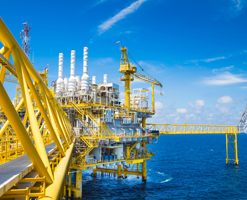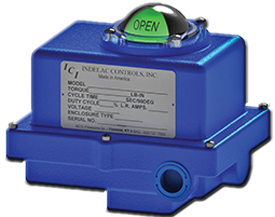
If an emergency control system fails to control flow in a critical situation, it can have devastating consequences in oil and gas applications. Electric actuators require a constant power source in order to function. Power failure has the potential to leave actuators stuck in the operating position, leading to unsafe conditions, accidents, or equipment damage.
To avoid these situations, fail-safe actuators store enough energy to drive the actuator to a preset safe position whenever they detect a loss of power.
Fail-Safe Actuator Applications
Fail-safe actuators are critical in a number of applications and industries to prevent instances where unexpected events might cause damage to equipment, materials, or personnel. Oil and gas applications span a broad range of environments ranging from pipelines to processing. Automated fail-safe actuators operate in all of these applications.
Fail-safe valves offer value in a variety of situations. Some of the common uses for these valves include:
- Emergencies where loss of power triggers the actuator and moves the valve into a predetermined safe position without the need for human control.
- Providing safe and fast valve closure in areas that are hard to access due to space issues.
- Hazardous environments where remote controls are needed to quickly close valves without exposing workers to extreme temperatures, fumes, or other dangerous environmental conditions.
- Any oil and gas operation where a valve may require effective controls that include the ability to set a valve quickly into a fail-safe position.
- Remotely located valves that cannot be reached quickly may need to be triggered into a fail-safe position remotely from a distance.
Fail-safe actuators in these and other applications can prevent a variety of catastrophic events, such as:
- Damage to equipment
- Employee injury or death
- Process breakdowns that create unsafe conditions
Battery Backup vs. Spring-Return Fail-Safes
In remote locations, fail-safe systems that do not rely upon utility power are essential. These fail-safe actuators are available in two common forms: spring-return and battery backup.
- Spring-return fail-safe actuators immediately return valves to a safe position, facilitating immediate stoppage of material flow. The spring stores potential energy and snaps into the preset fail-safe mode (open or closed) instantly upon loss of power.
- Battery-backup fail-safe actuators don’t respond as fast as spring-return actuators in an emergency, but they offer a viable solution for remote locations where access to utility power is limited or unreliable. Another benefit of the slower travel time to fail position is to limit the hammer effect of slamming a valve closed, which can create a pressure wave inside the pipe potentially leading to major problems. Of note, battery-backup actuators require regular preventative maintenance to charge and/or replace batteries (every 4-5 years).
Fail-Safe Actuator Solutions from Indelac Controls, Inc.
Indelac Controls offers a broad product range of actuator types and control options for applications that require superior fail-safe capabilities in the oil and gas industry. All of our fail-safe actuators are available with explosion-proof enclosures and meet CSA NEMA-7 requirements. We manufacture all of our products in the United States, ensuring that each unit is subject to our stringent quality assurance standards.
Fail-safe actuators allow for the quick containment of an emergency event before it becomes a major catastrophe by providing automated valve positioning to a predetermined fail-safe position. Fail-safe actuators are an important component in nearly any oil and gas setting. Please contact us or request a quote for more information about fail-safe actuators for your operation.






